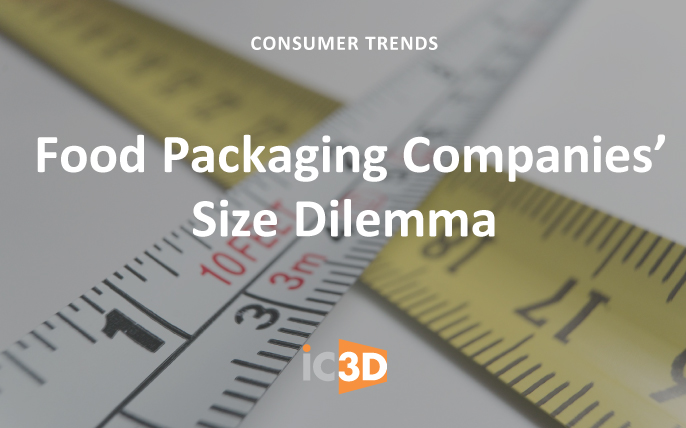Brand owners have many challenges when it comes to food packaging—not the least of which is the recent increase in different package sizes for the same product. A recent Dieline blog pointed out that changing consumer habits and demographics have led to rapid growth in multiple sizes for food products. This poses problems that require a comprehensive approach (including the use of iC3D, of course).
Convenience Rules
The trend towards multiple size containers is all about convenience. Single-serving and “family-size” containers are deliberately targeted—as one would expect. The snacking habit, often driven by non-traditional work schedules, also lends itself to a greater diversity of package sizes. Even age differences (like an older consumer’s difficulty opening a particular container) can have an impact on the number and variety of food packages for a single item.
Such variety is likely to increase. Consumers in developed countries are used to getting what they want.
The trend amplifies concern over packaging and the environment—as the Dieline blog comments make clear. However, the most significant economic impact is on the CPC supply chain. Shelf space is a relatively fixed commodity, and attention spans are likely to get even shorter. More sizes mean increased cost and financial risk in the fight for “shelf awareness” and consumer loyalty.
Food packaging companies and their partners have to take a broad, systemic approach in order to succeed. Here are some ideas.
Managing the Data
As with any complex supply chain, food packaging requires a disciplined approach to the data, as Prime Label Consultants and others have been advocating in the newly complex issue of nutritional labels. Digital Asset Management (DAM) is more essential now than it has ever been. For each product, there are digital brand elements like logos, food labels (now more difficult if there are more than one size container), container-specific barcodes, brand color definitions, and a host of process and transactional metadata.
What makes DAM challenging is the complex nature of the packaging supply chain. Brand owners and designers need secure access, of course, but so do other partners—printers, converters, and of course the actual food processors and distributors.
Managing the Design
Even a robust DAM will not suffice if the creation of each food package (and all its size variations) is a slow, cumbersome process. With each new size, a prolonged design, ideation, review, and approval process becomes an intolerable burden.
The answer of course is to streamline that process with a virtual, real-time, Internet-enabled 3D system that allows each package to be designed, reviewed, and approved in a fraction of the time.
Managing Expectations
In addition to using DAM and iC3D, food packaging brand managers may have to make some hard business decisions. Not every new “snack size” container will prove to be a benefit to the food company and the consumer. Having an agile design and ideation process is a great first step, but using it to create product success is the work of a lifetime.






